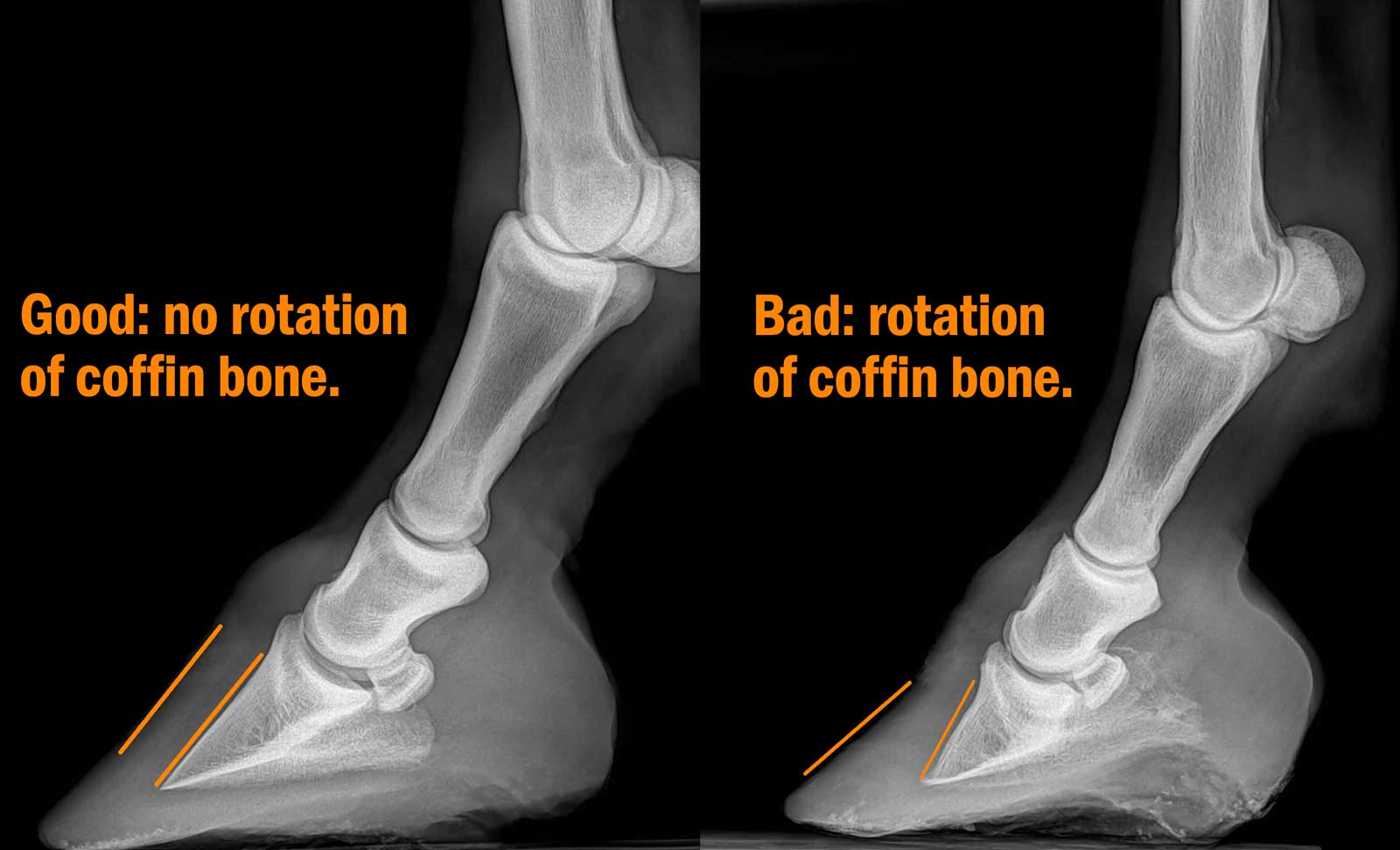
Founder” is a term used to describe a common and serious condition in horses, also known as laminitis. Laminitis is the inflammation of the laminae, which are sensitive structures inside the hooves that connect the coffin bone (the bone within the hoof) to the hoof wall. Founder occurs when there is severe laminitis that leads to structural changes in the hoof, often causing the coffin bone to rotate or sink within the hoof capsule.
Here are key points about laminitis and founder in horses:
- Causes:
- Laminitis can be triggered by various factors, including:
- Dietary changes: Rapid access to lush pasture or overfeeding, especially with high-carbohydrate feeds.
- Metabolic issues: Conditions like Equine Metabolic Syndrome (EMS) or Cushing’s disease (PPID) can contribute.
- Systemic illnesses: Infections, colic, and other systemic issues can lead to laminitis.
- Excessive weight-bearing: Such as in cases of supporting limb laminitis.
- Laminitis can be triggered by various factors, including:
- Symptoms:
- Lameness and reluctance to move.
- Increased digital pulses in the hooves.
- Heat in the hooves.
- Shifting weight between hooves (trying to relieve pain).
- The horse may adopt a characteristic “founder stance,” leaning back to shift weight off the front hooves.
- Diagnosis:
- Diagnosis is based on clinical signs and may involve X-rays to assess the extent of structural damage to the hooves.
- Treatment:
- Early intervention is crucial for a better prognosis.
- Treatment involves addressing the underlying cause, pain management, and supportive care to reduce the strain on the hooves.
- Therapeutic shoeing or trimming may be necessary to support the affected hooves.
- Medications, such as non-steroidal anti-inflammatory drugs (NSAIDs), may be prescribed.
- Prevention:
- Managing diet and preventing sudden access to high-carbohydrate feeds.
- Monitoring and managing systemic conditions like EMS and Cushing’s disease.
- Regular hoof care and proper trimming.
- Prognosis:
- The prognosis for laminitis can vary based on the severity of the condition, how promptly it is treated, and the underlying cause.
- In severe cases, rotation or sinking of the coffin bone can lead to long-term lameness and may require ongoing management.
It’s important for horse owners to work closely with a veterinarian to identify and address the underlying causes of laminitis and to implement a comprehensive treatment plan. Early recognition and intervention can significantly impact the outcome for horses affected by founder. Additionally, preventive measures play a crucial role in minimizing the risk of laminitis in susceptible individuals.
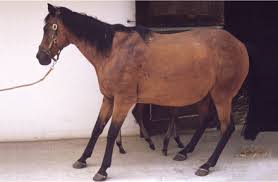
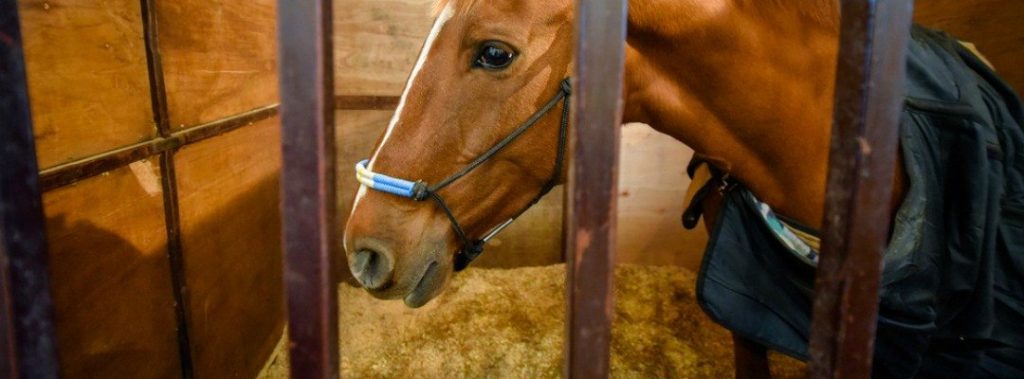
The recovery of a foundered horse depends on various factors, including the severity of laminitis, the degree of structural damage to the hooves, the underlying cause, and the promptness of intervention. Here are key considerations for the recovery of foundered horses:
- Early Intervention:
- Early recognition and prompt intervention are crucial for a better prognosis.
- Immediate measures may include removing the horse from the triggering cause (e.g., changing diet, limiting pasture access) and providing pain relief.
- Veterinary Care:
- Consultation with a veterinarian is essential for a thorough assessment and development of a treatment plan.
- Radiographs (X-rays) may be used to assess the extent of rotation or sinking of the coffin bone and guide treatment decisions.
- Pain Management:
- Pain relief is a key aspect of managing laminitis. Non-steroidal anti-inflammatory drugs (NSAIDs) may be prescribed to alleviate pain and reduce inflammation.
- Supportive Care:
- Rest is crucial to reduce strain on the hooves. Horses may need to be confined to a stall or a small, well-bedded area.
- Therapeutic shoeing or trimming may be necessary to support the affected hooves and promote proper weight distribution.
- Dietary Management:
- Dietary adjustments are often necessary to address the underlying causes of laminitis.
- Controlled access to pasture and a carefully balanced diet can help prevent further episodes.
- Monitoring and Follow-Up:
- Regular monitoring of the horse’s condition is necessary, including assessing pain levels, observing hoof growth, and adjusting the treatment plan as needed.
- Follow-up radiographs may be taken to track the progress of the hooves.
- Rehabilitation and Exercise:
- Gradual reintroduction of controlled exercise may be part of the rehabilitation process.
- Physical therapy and exercises to encourage proper movement and weight-bearing can aid in recovery.
- Long-Term Management:
- In some cases, foundered horses may require ongoing management and may be predisposed to future episodes.
- Preventive measures, including careful dietary management and regular hoof care, are important for long-term well-being.
- Prognosis:
- The prognosis varies based on the individual case. Some horses may fully recover and return to normal function, while others may experience chronic lameness.
- Severe cases with significant structural damage to the hooves may have a guarded prognosis.
It’s essential for horse owners to work closely with their veterinarian and potentially involve a farrier or equine podiatrist with experience in laminitis cases. Regular communication and collaboration between the horse owner and the veterinary team are key to a successful recovery. The process may take time, and patience is crucial for the well-being of the horse.


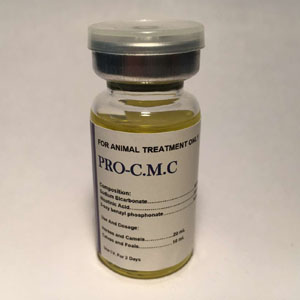


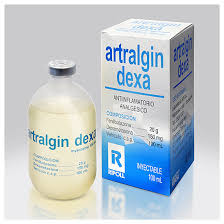
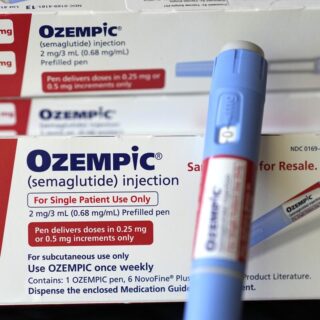
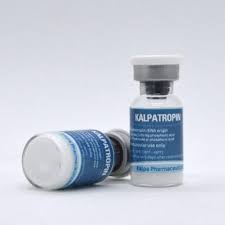
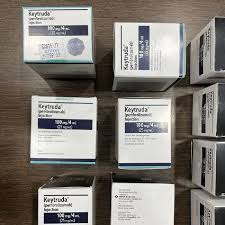
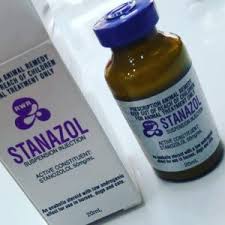
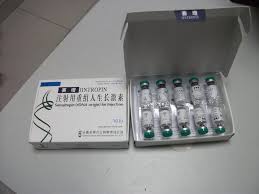
Leave a Reply